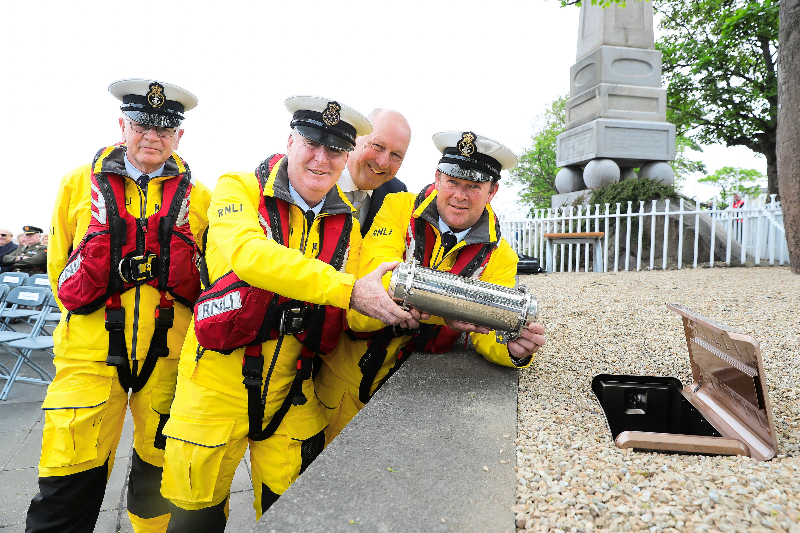TWO hundred years after the first stone was laid to build Dun Laoghaire Harbour, the President of Ireland, Michael D Higgins, arrived in the seaside town to officially launch its Bicentenary Celebrations.
In May 1817, the Lord Lieutenant of Ireland, Earl Whitworth, laid the foundation stone, the first stone from the quarry at Dalkey, on the site where the King George IV monument on Queens Road was subsequently erected.
On that day, Lord Whitworth included with the foundation stone a time capsule, which included a coin of the realm and 10 newspapers.
Two centuries later and to mark the special occasion of the Bicentenary Opening Ceremony, President Higgins buried a time capsule with letters and drawings from local school children, a newspaper of the day, recent photographs of the harbour, and letters from the RNLI, Coast Guard, Coal Harbour Users Group and from the cathaoirleach of Dun Laoghaire Rathdown County Council, Cllr Cormac Devlin.
Speaking at the event, Gerry Dunne, CEO of Dun Laoghaire Harbour Company said: “We are delighted that the President took time out of his busy schedule to officiate at the launch of our Bicentennial Celebrations today.
“We are celebrating our 200 years of Dun Laoghaire Harbour history, but also remembering the immense contribution of those who built the harbour between 1817 and 1842.
“We in the Dun Laoghaire Harbour Company are proud to dedicate the new public space created around the restored Victorian Fountain to the memory of these largely forgotten workers.
“The opening ceremony today also announces the packed summer schedule of events marking the Bicentenary of Dun Laoghaire Harbour taking place around Dun Laoghaire over the rest of the year.”
Over a period of approximately 25 years, up to 1,000 workers each year laboured in extremely difficult and dangerous conditions to build the magnificent harbour we all enjoy today.
The massive volume of stone transported to build the harbour can best be appreciated by adding together the length of the two piers (1.75 miles) and then considering their foundation width (300 feet) and depth (24 feet below low tide mark).
Mr Dunne added: “In remembering the builders of the piers and the development of Dun Laoghaire and the surrounds, we know that the workers, many with their families, lived in huts and stone cabins they had built themselves on Dalkey Commons and on what are now Sorrento Road, Coliemore Road and the Convent Road/Leslie Avenue area by 1823.
“These workers came mainly from Dublin and Wicklow but skilled stone-cutters also came from Scotland. At that time, labourers were paid 1s 8d (about 10 cent) per day and the overseers 2s (13 cent).”
As part of the ceremony the Air Corps stagd a ‘Fly By’ while ceremonial cannons fired, and a 21-gun salute was accorded by the Irish Defence Forces to mark the occasion.
Volunteers from the RNLI and the Coast Guard welcomed the Presidents to Dun Laoghaire with a will create a Guard of Honour.
Speakers on the day also included the cathaoirleach of Dun Laoghaire Rathdown County Council, Cllr Cormac Devlin and Dun Laoghaire Harbour Company Chairperson, Eithne Scott Lennon.
The ceremony also announced the packed summer schedule of events marking the Bicentenary of Dun Laoghaire harbour, taking place around Dun Laoghaire throughout the rest of the year.
